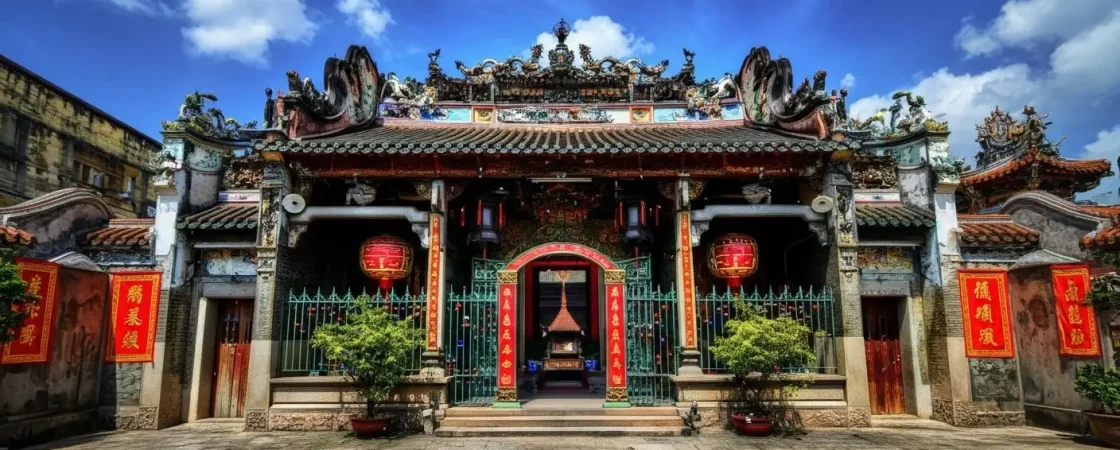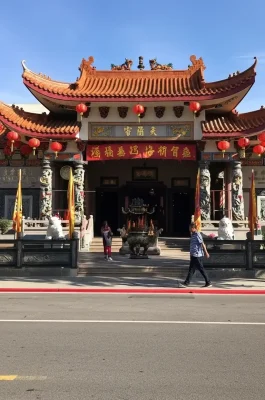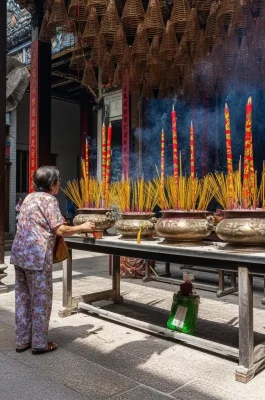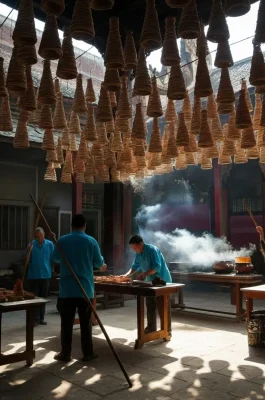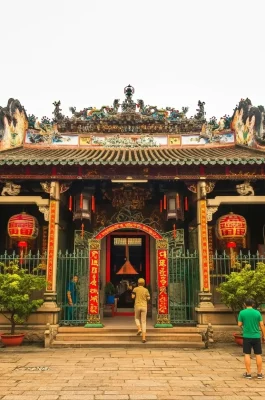The Goddess of the Sea and the Chinese Heart of Saigon
The Thien Hau Pagoda, or Chùa Bà Thiên Hậu, is the spiritual anchor of Ho Chi Minh City’s vibrant Chợ Lớn (Chinatown). Built by the Cantonese community in the early 19th century, the temple is dedicated to Mazu (Thiên Hậu Thánh Mẫu), the Goddess of the Sea, who is revered for protecting sailors, fishermen, and merchants. For the Chinese immigrants who came to Vietnam by boat, this temple was, and remains, a profound symbol of safe passage and cultural identity.
A Living Museum of Art: The architecture is a stunning, intricate showcase of classic Southern Chinese design. The tiered roof is particularly mesmerizing, adorned with thousands of vibrant ceramic figurines and dioramas depicting scenes from Chinese folklore, guardian spirits, and the Goddess’s own legendary voyages. Every tile and carving is a piece of storytelling.
The Atmosphere of Spiral Incense: The central courtyard and main halls are famous for their gigantic, slow-burning incense coils suspended from the ceiling. These spirals can burn for days or even weeks, representing continuous prayer and creating an unforgettable, misty, and intensely fragrant atmosphere that seems to hang in the air like a spiritual curtain. Worshippers often attach their written wishes to the coils before lighting them.
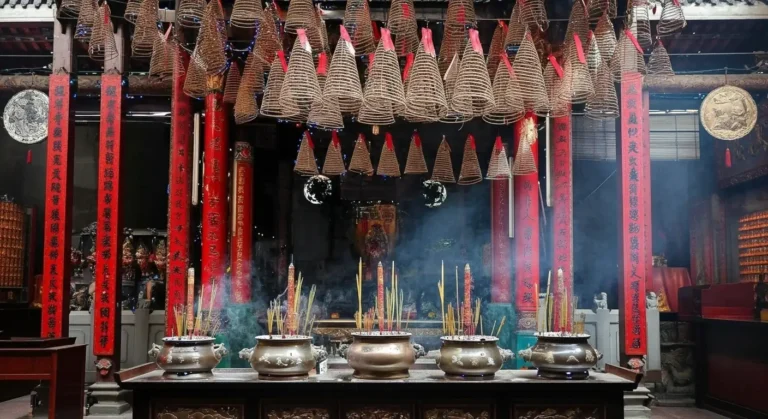
Visitor Information & Unique Rituals
The Sacred Vessel: Inside the main sanctuary, you’ll find the wooden statue of Lady Thien Hau, adorned in rich robes. Flanking her are the statues of her two legendary guardians, the clairvoyant Qianliyan (Thousand-Mile Eye) and the clairaudient Shunfeng’er (Wind-Hearing Ear), who helped her monitor the vast ocean.
A Treasure Trove: The pagoda is also a historical repository, preserving close to 400 antiques, including ancient stone steles, carved wooden bas-reliefs, and ornate urns that attest to centuries of devotion.
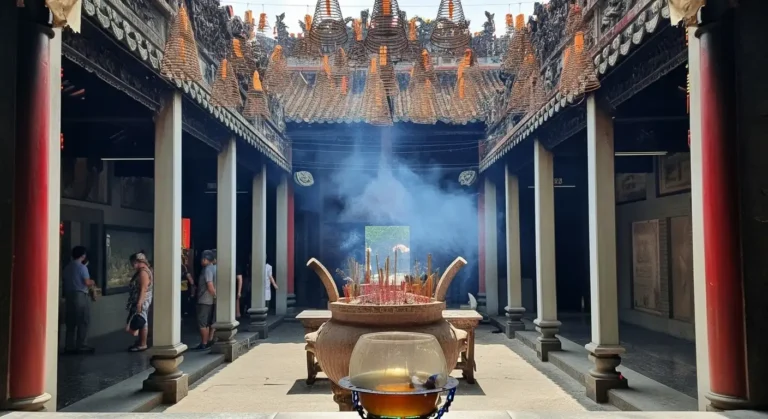
| Practical Information | Details |
|---|---|
| Address | 710 Nguyễn Trãi Street, Ward 11, District 5, Ho Chi Minh City (In Chợ Lớn) |
| Entrance Fee | Free of Charge (Donations for upkeep are appreciated) |
| Opening Hours | Generally 8:00 AM – 5:00 PM daily (Hours may vary; sometimes opens as early as 6:00 AM) |
| Cultural Note | Modest dress (shoulders and knees covered) is requested out of respect for this sacred place. |
| Best Time to Visit | Visit during the annual Thiên Hậu Festival on the 23rd day of the third lunar month for a spectacular display of processions, dragon dances, and vibrant community celebration. |
